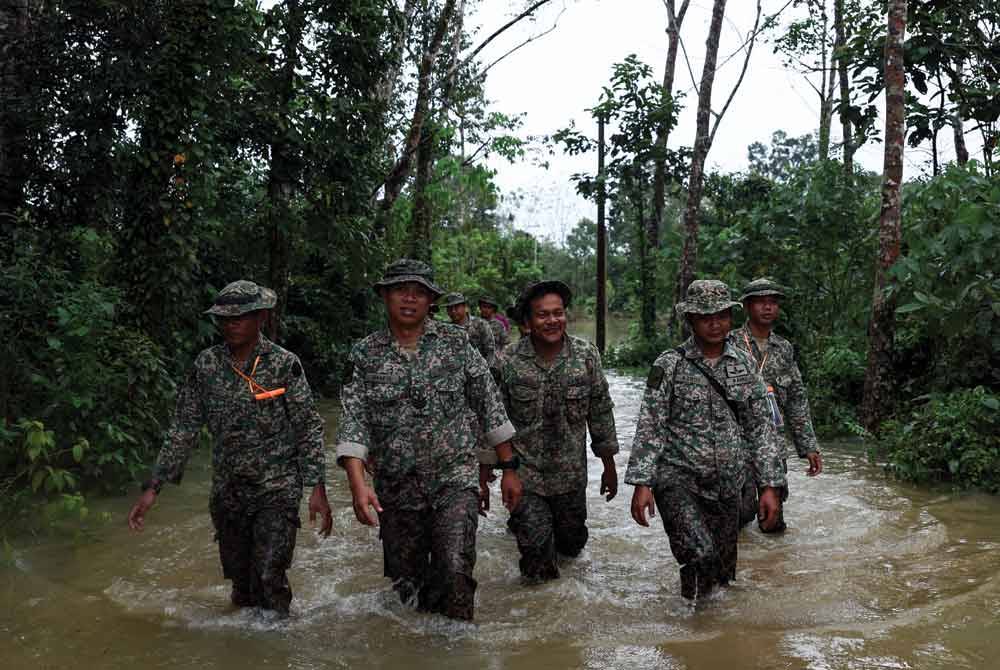Understanding the relationship between defence measures and flood resilience
MUHAMMAD FUAD MAT NOOR
THE general public may wonder about the headline displayed but what is the connection between defence and floods?
Although it seemed odd, the connection between the physical threat from outside enemies and the threat of floods to national security has many similarities.
Both can and were capable of causing death and massive property destruction on a large scale.
Floods, like wars, can cause suffering and substantial losses, affecting the local food production, crippling industries and causing hardship to the people.
The difference was that destruction was caused by overflowing water, not explosions and fire.
People threatened by war move to refugee camps, while for floods, victims were relocated to Temporary Relief Centres (PPS).
Wars may erupt for various reasons, such as border disputes, territorial claims, natural resources and political ideologies.
Floods might be due to climate change phases, extreme weather, including very heavy rain causing major floods and unsustainable development factors in the rain catchment areas.
Believe it or not, in one study, the failure of water overflow management by four main dams on the Perak River could lead to a severe flood.
According to estimates, it could result in the loss of 10,000 lives and property damage worth RM1.25 billion.
When facing an armed conflict or war, preparation with careful and holistic planning was critical.
This enabled responsible parties to handle it efficiently and effectively.
If someone was unsure that war and floods can be part of a strategy to weaken a country, we did not need to look far into history; it was already used in 2023.
In June 2023, the Kakhovka reservoir in Ukraine was 'broken,' causing an overflow of water from the Dnieper River.
Many believed that Russian forces blew up this dam to hinder Ukraine's military maneuvers for a large-scale attack in the area.
A total of 58 individuals were reported killed, while 31 others were missing due to the flooding.
It also resulted in many livestock deaths and the destruction of fields, houses and economic infrastructure.
The recent wave of floods in the country also witnessed a similar incident, but on a smaller scale when part of the Integrated River Basin Development Project (PLSB) embankment in Sungai Golok broke.
PLSB aimed to reduce flooding problems in the areas near Sungai Golok in Tumpat and parts of Pasir Mas, enhancing the country's safety and sovereignty through flood mitigation infrastructure.
When the PLSB embankment in Sungai Golok at Kampung Tersang, Rantau Panjang broke, the area supposed to be protected by the embankment began to be submerged.
According to the Kelantan Drainage and Irrigation Department (JPS) acting director, the PLSB dam broke due to the high water level of Sungai Golok.
With a height of 10 metres, the dam failed to withstand the impact of the strong current and erosion of Sungai Golok, which reached 11.03 metres.
Some have raised whether there was an element of sabotage by certain parties intentionally damaging the dam, but this has been denied by the state JPS.
This view arose because residents in Rantau Panjang were dissatisfied with the Sungai Golok PLSB Project, which they call 'the cursed embankment,' causing them to face floods multiple times a year.
What was clear was that the strategy and planning were not holistic and only short-term in nature.
The dam's height and insufficient water release outlets proved this.
It was clear that JPS generals and commanders failed to make long-term plans by considering the environmental conditions, the impact on the population and settlements and future threats, especially due to global warming, which made seasons and rainfall worse.
They should have been more proactive and able to devise a comprehensive plan to control the threats and damage that will occur, especially when knowing that the 'attack' of the enemy will take place at the end of the year, every year since forever.
JPS generals and commanders should act more proactively and be able to formulate a comprehensive plan to control the threats and damages that will occur.
Muhammad Fuad Mat Noor is a defence analyst and has received the Best Journalist award from the Defence Ministry in 2003, 2004, 2006, and 2007.
The views expressed in this article are the author's own and do not necessarily reflect those of Sinar Daily.













